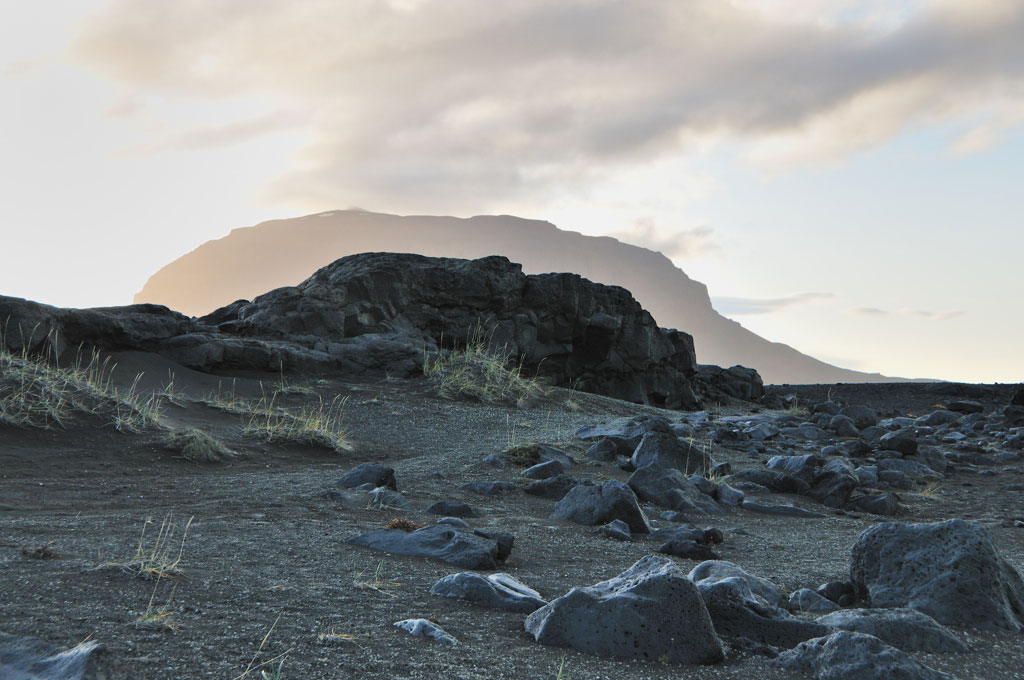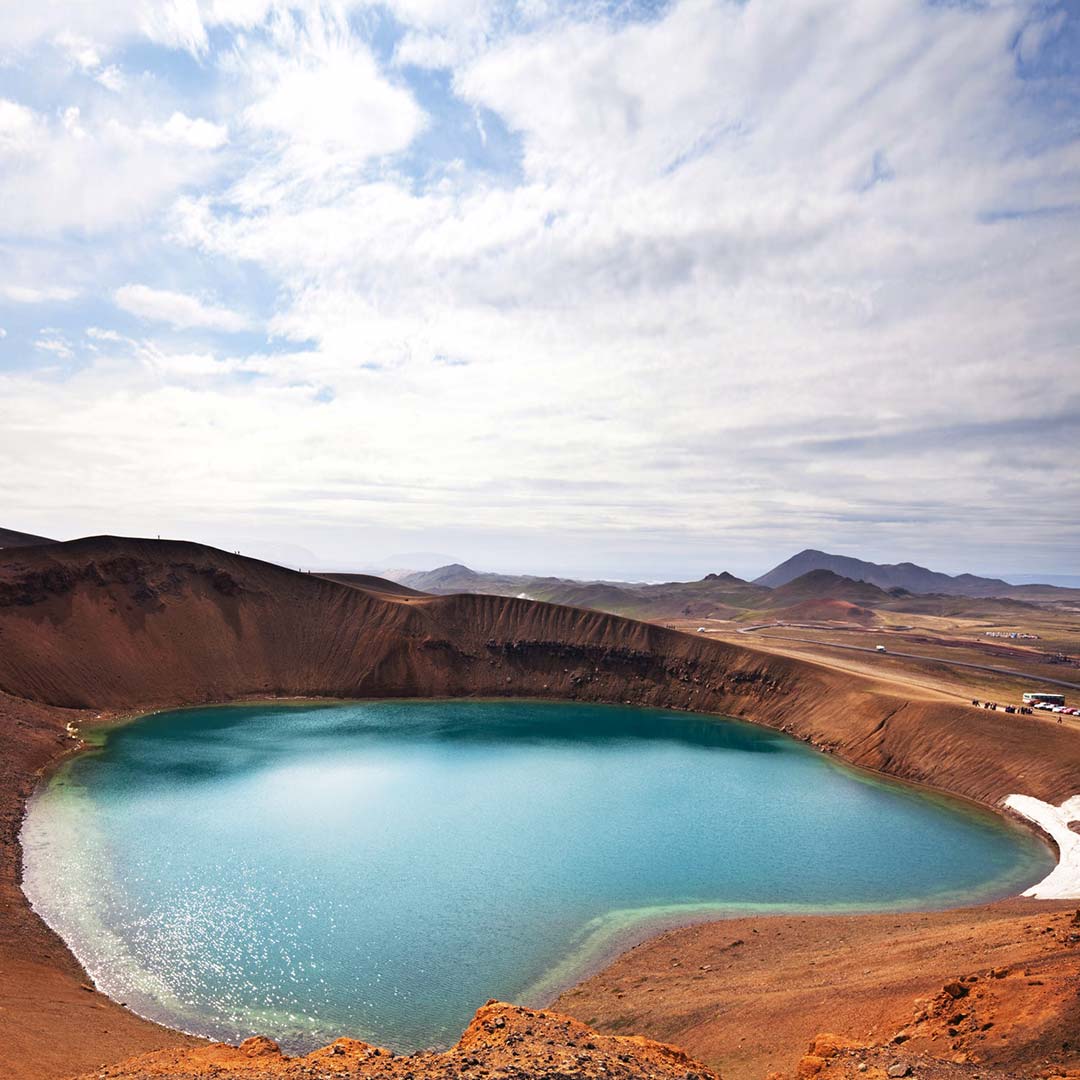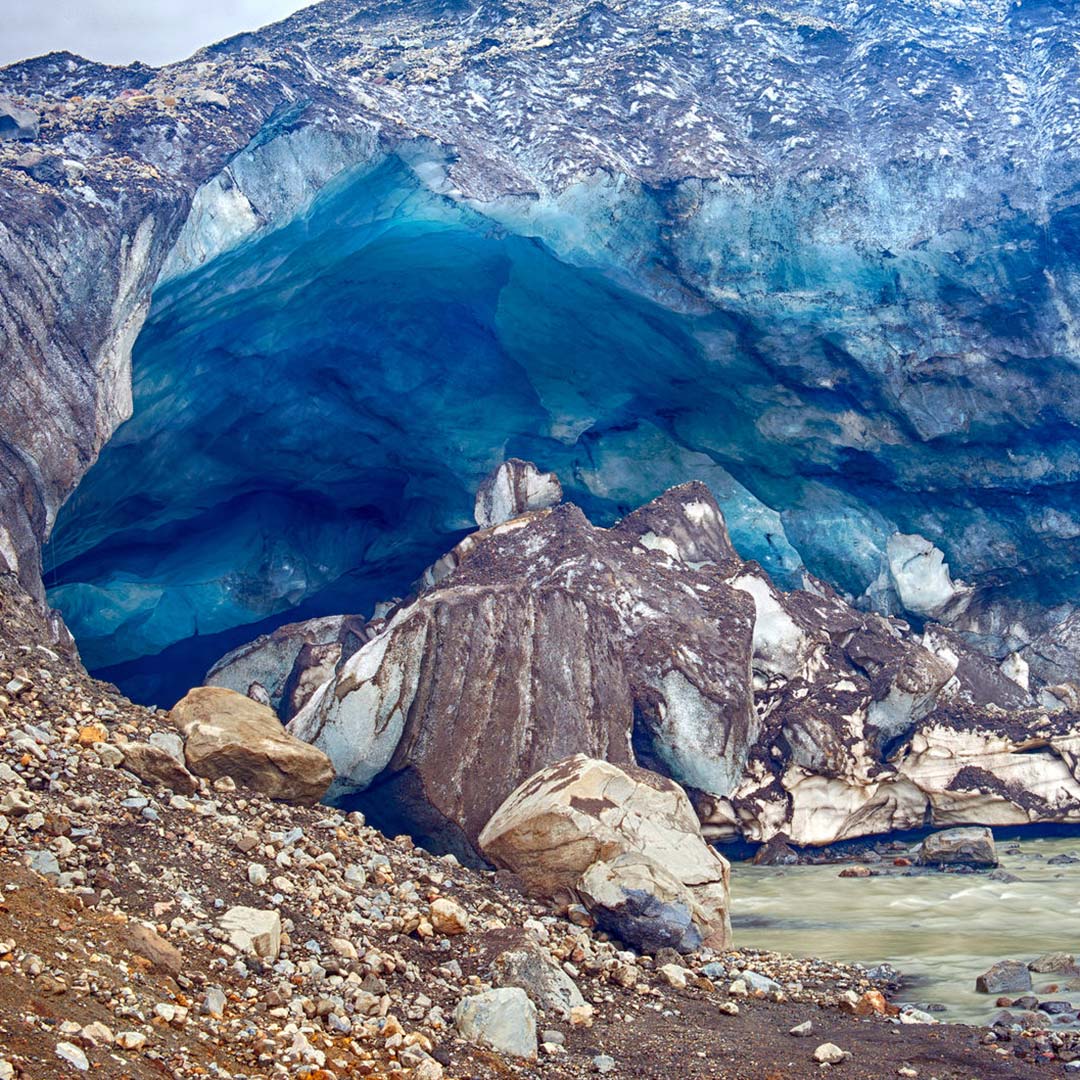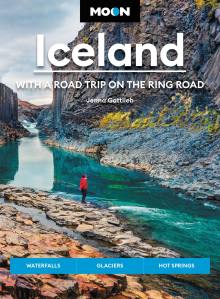What to See along Route F26 in Iceland’s Highlands
Black lava, gigantic boulders, and towering mountains in the distance await you along Sprengisandur, Route F26 though Iceland’s Highlands. Tourists travel to this region to check out what is essentially an Arctic desert. It’s dry and barren with water trapped in the glaciers. Iceland’s summer is warm enough for significant melting.
Mount Trölladyngja
Mount Trölladyngja (Troll’s Volcano) is the largest shield volcano in the country and connects the Grimsvotn and Bárðarbunga central volcanoes. Mount Trölladyngja (1,468 meters), which is still active, is 10 kilometers in diameter with a 100-meter-deep crater on top. Lava flowed from it in all directions, especially to the north and west. The Gaesavotn Route F910 passes through the north of it, and a four-wheel-drive vehicle is necessary. The GPS coordinates are N 64.8931, W 17.2547.

Ódáðahraun
Ódáðahraun (Crime Lava Field) not only is the largest lava field in Iceland, but also it’s the largest desert in Europe, spanning over 6,000 square kilometers. Black, brown, and gray dominate the landscape. Visitors to the area will see kilometers of sand, vast expanses of lava, and interesting geological formations shaped by volcanic activity over the centuries. The lava shapes range from flat and smooth to rough and jagged. The region garnered its name “crime lava” based on lore that numerous criminals hid out in the area trying to elude the authorities. The wind blows strongly, and there always seems to be a chill in the air. It’s an eerie place to visit—the isolation is overwhelming. Route F88 takes you to Ódáðahraun.
Laugafell
Laugafell (Bath Mountain) is situated near the northeast of the Hofsjökull glacier and about 20 kilometers southwest from the end of Eyjafjarðardalur, a valley. What makes this area so spectacular is that the mountain (879 meters) is adjacent to a geothermal hot spot. Three mountain huts are open during the summer with cooking facilities and a geothermal nature pool outdoors. Hot springs are on the northwestern region of the mountain. It’s a special place in the vast barren stretch of the highlands. Patches of grass and plants with bubbling pools make it a desert oasis. Laugafell’s GPS coordinates are N 65.0278, W 18.3319, and the region is accessible by Route F821.

Askja
Askja is a caldera in the Dyngjufjöll Mountains. Calderas are dramatic volcanic features that were formed by collapsing land after a volcanic eruption; they are essentially huge volcanic craters. The area is remote and awe-inspiring. Askja (1,510 meters) emerges from the Ódáðahraun lava field, and the terrain is quite rocky. Víti is a tremendous pale blue lake-filled crater that emerged after the great eruption of the Askja volcano in 1875. It’s possible to take a dip in the water, which reaches a temperature of about 30°C (86°F).
Askja is one of the most popular destinations in the highlands. There are two mountain huts (the Dreki huts) on Route F88, about 100 kilometers from the Ring Road. From there, it’s an eight-kilometer drive up into the Askja caldera. It is a walk of about 2.5 kilometers from the car park to Víti. Keep in mind that the roads are usually only open for about three months, from late June until September, depending on the weather. It could be longer or shorter.
Hiking Mount Askja
Passionate hikers will want to walk the rim of Askja. The difficult eight-hour hike offers some slopes and ultra-rocky terrain along with spectacular views of lava fields, mountains, and the mighty Víti crater. While the trail is well maintained, the main challenge is weather. If the weather forecast calls for wind, it’s best to skip the planned hike. Do not underestimate the power of Iceland’s wind, especially in the highlands.
Askja is about a 30-minute moderate hike from the car park up to the caldera. If you are not planning to hike the rim, you can just explore near the car park. To reach the car park, take Route 1 to Route F88. The GPS coordinates are N 65.0300, W 16.7500.

Kverkfjöll
The Kverkfjöll volcano (1,764 meters) includes two calderas that are filled with ice. The area is striking for its colors. The deep black background gives way to gorgeous blues and icy white. The main event is ice caves that were created by hot springs slowly melting the ice into interesting shapes. However, please observe the caves from the outside; you never know when the ice mass could give way. Stay safe. The GPS coordinates for Kverkfjöll are N 64.7475, W 16.6315. To get to Kverkfjöll, take Route F910 southeast to Route F902.

